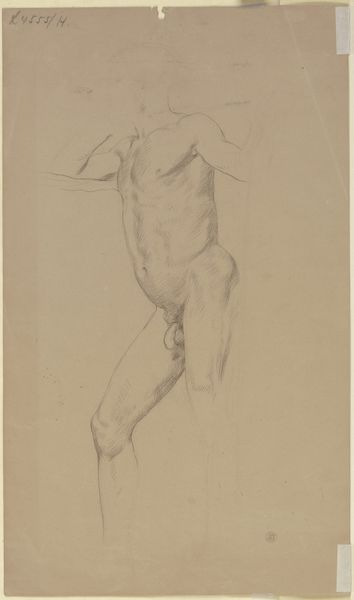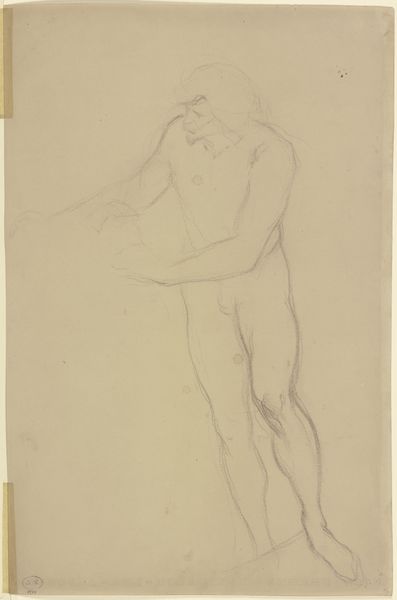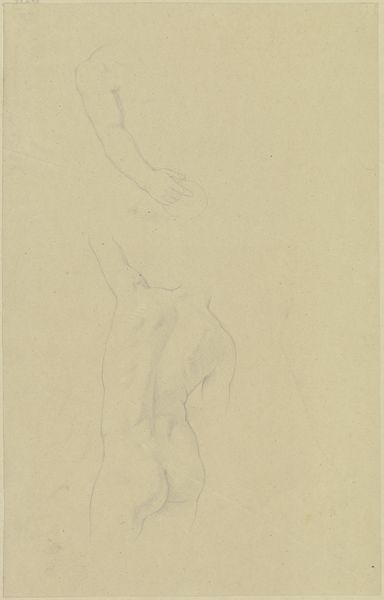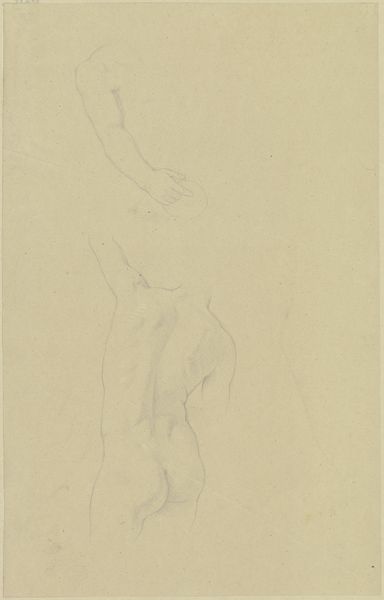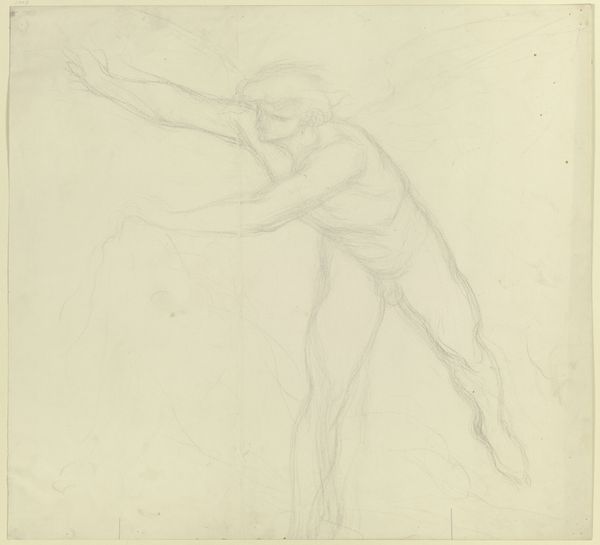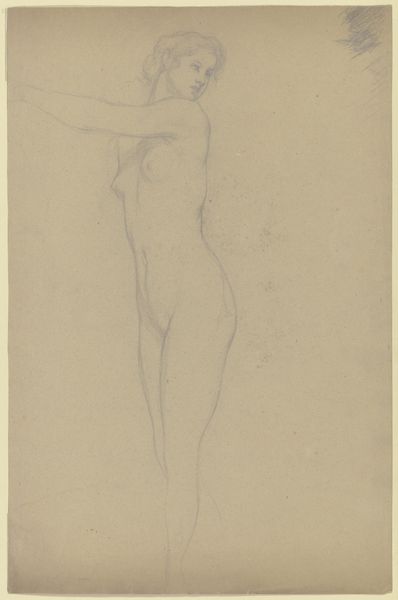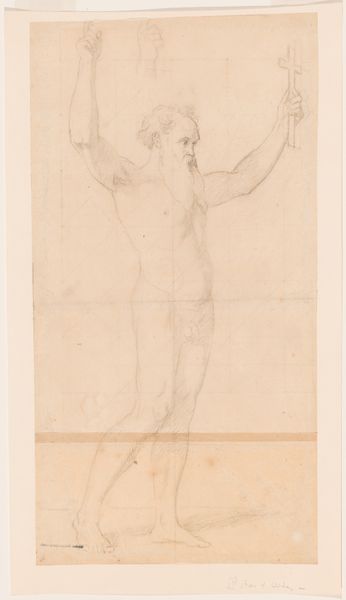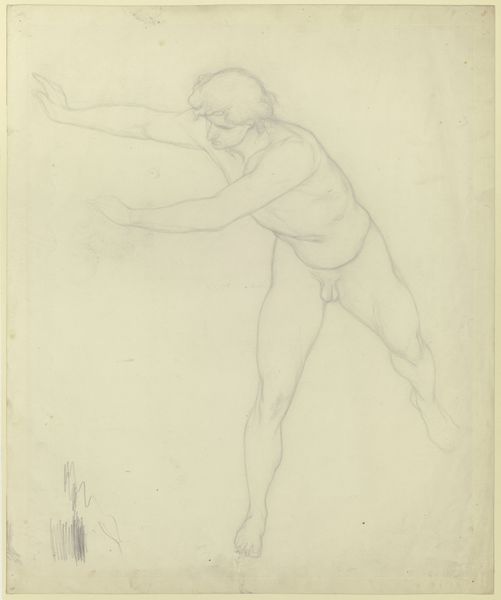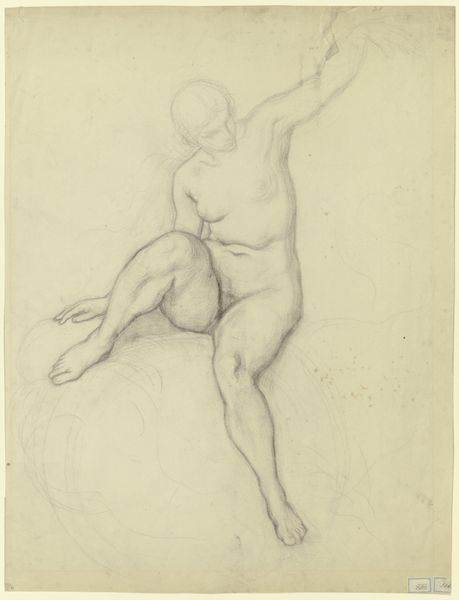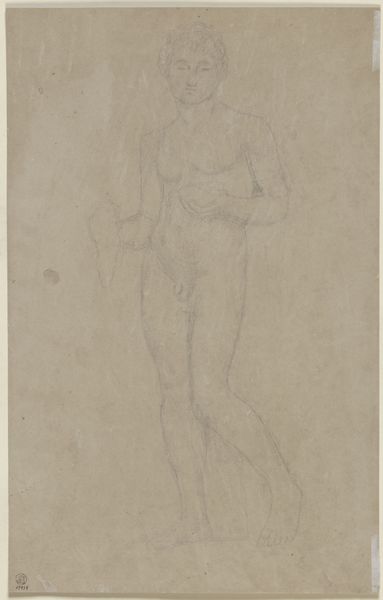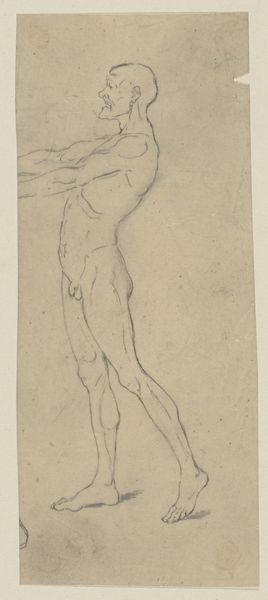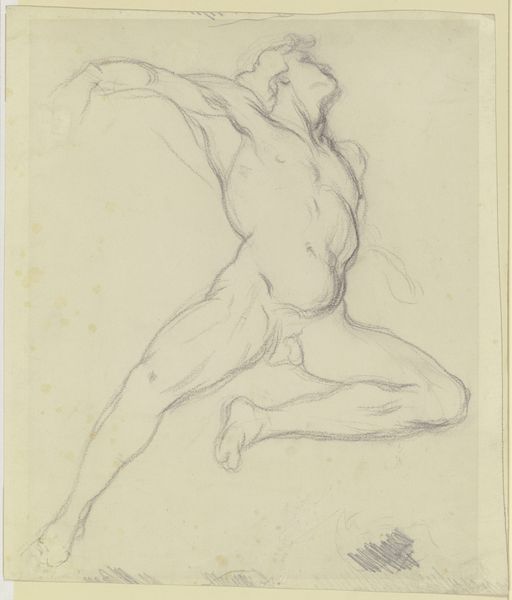
drawing, paper, pencil
#
pencil drawn
#
drawing
#
16_19th-century
#
figuration
#
paper
#
pencil
#
academic-art
#
nude
#
realism
Copyright: Public Domain
Curator: Victor Müller's pencil drawing, "Daniel als kniender männlicher Akt," from around 1867, depicts a kneeling male nude, arms raised. It's currently held at the Städel Museum. Editor: My initial impression is one of stark vulnerability, even surrender. The tentative pencil strokes give him a ghostly quality. Curator: Absolutely. Considering the period, the drawing becomes more complex. Müller lived in a time when academic art traditions clashed with emerging realist movements. The classical subject of a nude, potentially representing Daniel from the Bible, intersects with a visible interest in depicting the human form as it exists, flaws and all. How does that impact the overall impression, do you think? Editor: The artist is toying with established archetypes. Daniel represents faith and resilience, and by presenting the figure unclothed, in such a raw, almost unfinished manner, Müller subverts those expectations. I am also struck by the upward gaze of the figure: the formal choice creates a sense of yearning, seeking. Curator: Exactly. Furthermore, looking at the context of masculinity during the 19th century, a time of rigid social structures, representing the male body in such a yielding pose challenges prevailing ideas. This artistic expression, albeit subtly, opens the door to interpretations relating to power dynamics, subjugation, or even spiritual seeking outside the prescribed religious confines. Editor: It certainly reframes a character typically viewed through a lens of unwavering strength, making us consider faith from the viewpoint of doubt and asking, as opposed to a triumphant declaration. The medium reinforces this: paper and pencil denote study. A sketch is never really 'done' – so perhaps this reading allows the expression of inner tensions in ways a finished history painting would struggle to articulate. Curator: A subtle, yet poignant representation of a character grappling with internal struggle, mirroring the broader social anxieties of the period. Editor: Ultimately, what starts as an aesthetic exercise morphs into a powerful commentary about faith, masculinity, and societal expectations in flux.
Comments
No comments
Be the first to comment and join the conversation on the ultimate creative platform.
